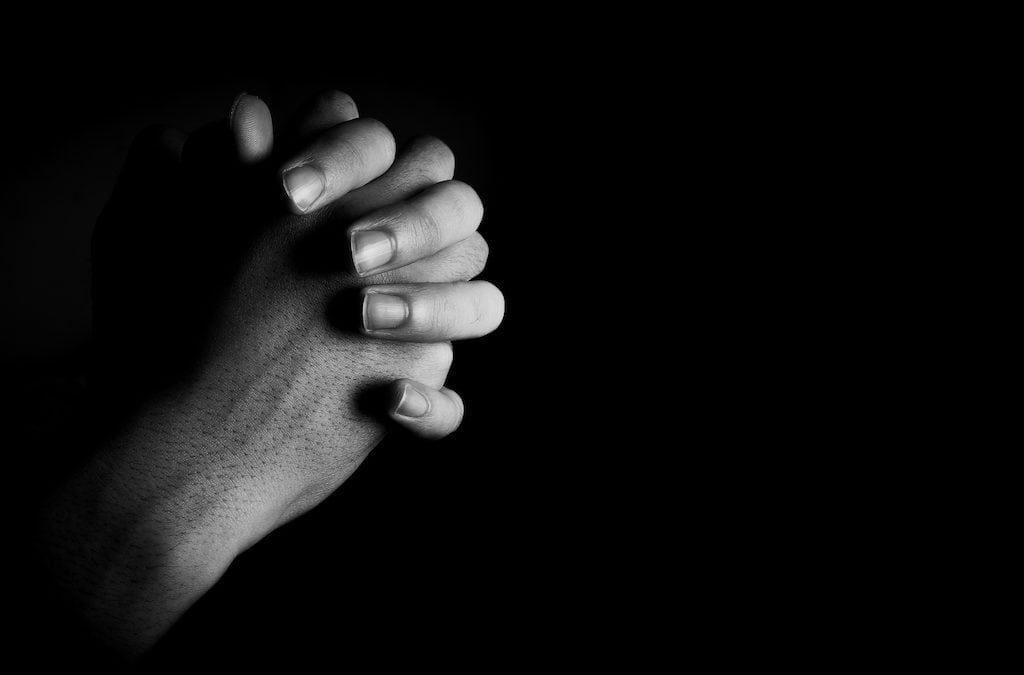While I do not remember the exact words of the prayer, it went something like this:
Lord, please keep us from harm and protect us.
Look out for our families and loved ones and keep them from danger.
Help us to always do good and never evil.
Amen.
My abiding memory of that moment was sensing the abject fear behind the prayer, not just in the words but in the feeling of those who were praying. As I was not feeling fearful in that moment, my thoughts turned instead to what a “fearless prayer” would sound like. In other words, would people pray to a higher power at all if they weren’t afraid? And if so, what would they pray?
I also recognized a similar dynamic going on with my clients around goal-setting. Here were some typical goals my clients had been bringing to our sessions over the years:
- To create a “recession-proof” business
- To make six figures/seven figures/eight figures per year
- To have happy, healthy children
- To look great naked
- To create world peace
While there is nothing intrinsically fearful in any of these as intentions (i.e. “direction of travel”), the energy behind turning them into goals to be achieved was often fueled less by the love of the game and more by the fear of the consequences of failure.
In each case, the unspoken second half of the goals went something like this:
- To create a “recession-proof” business (so that I don’t go bankrupt and lose my marriage and feel like a failure for the rest of my life)
- To make six figures/seven figures/eight figures per year (so people are so impressed with me that they don’t notice what a worthless piece of sh*t I really am)
- To have happy, healthy children (because I wouldn’t be able to go on if I lost my kids)
- To look great naked (so that if I’m as unlovable as I think I am at least someone will want to be with me)
- To create world peace (so that I can finally relax and feel safe)
In the years that followed, I began paying much closer attention to the feeling behind my client’s (and my own) intentions and goals, and noticed that when someone was following a “fearless intention” – that is, aiming themselves in a direction out of curiosity, inclination, and excitement – they inevitably weathered the ups and downs of inner moods and outer circumstances with a great deal of grace and reached their goals with a higher than average degree of success.
When, on the other hand, they tried to push themselves forward out of fear, their motivation would wax and wane with each passing thought and feeling. Less fear, less interest in the goal; more fear (or more of fear’s kissing cousin, neediness), more obsession with the goal.
This raises, to my mind, two questions. First, how best to cope with fear of an uncertain world if not through prayer and/or goal setting?
And perhaps more importantly:
What would I still want if I wasn’t afraid?Click To TweetIn order to address the first question, we have to look a little more closely at what fear really is. “Fear” is what we call the feeling in our body when our thoughts about the future begin to look more like premonitions than like the creative energy of life taking a temporary form via the gift of Thought. In other words, outside of a clear and present danger (being chased by a tiger, held at gunpoint, etc), fear is nothing more or less than scary thoughts appearing real.
Asking how to cope with scary thoughts appearing real is a bit like asking how airplanes should cope with clouds that look particularly solid. They don’t need to “cope” because clouds are made of the same air as the rest of the sky airplanes fly through. While there may be a bit of turbulence while passing through the vertically rising air that cools to form a cloud, planes can fly around or through them with minimal risk and enjoy and appreciate their beauty and ever-changing form as they go.
Or as I put it in The Space Within:
There’s no such thing as a solution to a feeling.Click To Tweet
So if we don’t need to “solve” fear through prayer or remedial goal-setting (because the feeling we call fear will always re-solve itself as the creative energy of thought takes on new forms), my questions about the nature of fearless prayer and fearless intention remain.
On the prayer side of the equation, the closest thing I’ve found to a truly fearless prayer is found both in the silence and stillness at the heart of everything and in the words of the 13th century mystic Meister Eckhart who said:
“If the only prayer you ever say in your entire life is thank you, it will be enough.”
And to address what a fearless (not “brave” but literally “without fear”) intention looks like, I turn to the wisdom within you and ask you to contemplate and share your answers to in the comments section below:
What would you want if you weren’t afraid?
Have fun, learn heaps, and I’ll look forward to reading your responses!
With all my love,
![]()






